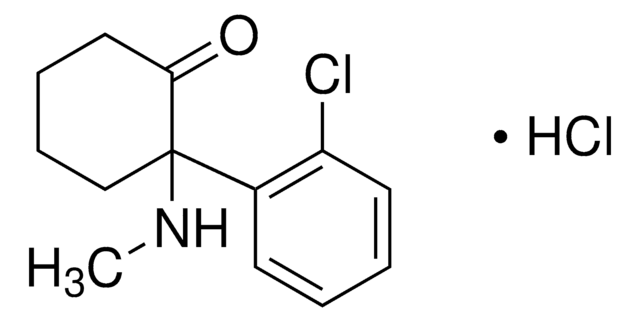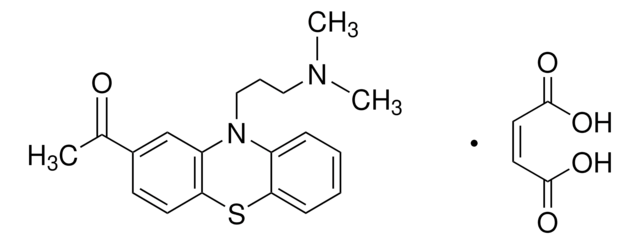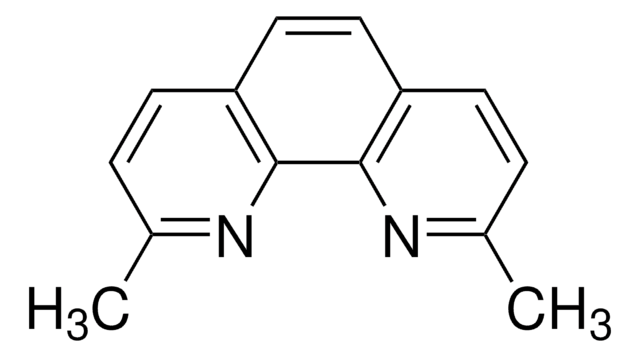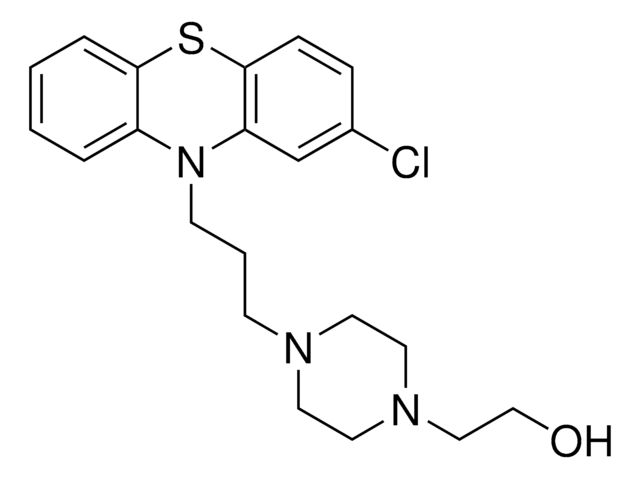A7111
Acepromazine maleate
≥98% (HPLC)
Synonym(s):
Acetopromazine maleate salt, 2-Acetyl-10-(3-dimethylaminopropyl)phenothiazine maleate salt, Acepromazine maleate salt
About This Item
Recommended Products
Quality Level
assay
≥98% (HPLC)
form
powder
storage condition
protect from light
color
yellow
solubility
H2O: >10 mg/mL
storage temp.
room temp
SMILES string
OC(=O)\C=C/C(O)=O.CN(C)CCCN1c2ccccc2Sc3ccc(cc13)C(C)=O
InChI
1S/C19H22N2OS.C4H4O4/c1-14(22)15-9-10-19-17(13-15)21(12-6-11-20(2)3)16-7-4-5-8-18(16)23-19;5-3(6)1-2-4(7)8/h4-5,7-10,13H,6,11-12H2,1-3H3;1-2H,(H,5,6)(H,7,8)/b;2-1-
InChI key
FQRHOOHLUYHMGG-BTJKTKAUSA-N
Looking for similar products? Visit Product Comparison Guide
Application
- as a component of anesthesia cocktail to test its effects on behavioral changes in rats
- as a component of anesthesia cocktail to study its effects on lung resistance of rats
- as an anti-psychotic pharmaceutical agent to study its cytotoxic effects on malignant glioma in glioblastoma (GBM) cells
Biochem/physiol Actions
Features and Benefits
signalword
Danger
hcodes
pcodes
Hazard Classifications
Acute Tox. 3 Oral - STOT SE 3
target_organs
Central nervous system
Storage Class
6.1C - Combustible, acute toxic Cat.3 / toxic compounds or compounds which causing chronic effects
wgk_germany
WGK 1
flash_point_f
Not applicable
flash_point_c
Not applicable
Certificates of Analysis (COA)
Search for Certificates of Analysis (COA) by entering the products Lot/Batch Number. Lot and Batch Numbers can be found on a product’s label following the words ‘Lot’ or ‘Batch’.
Already Own This Product?
Find documentation for the products that you have recently purchased in the Document Library.
Articles
We offer many products related to dopamine receptors for your research needs.
Our team of scientists has experience in all areas of research including Life Science, Material Science, Chemical Synthesis, Chromatography, Analytical and many others.
Contact Technical Service







